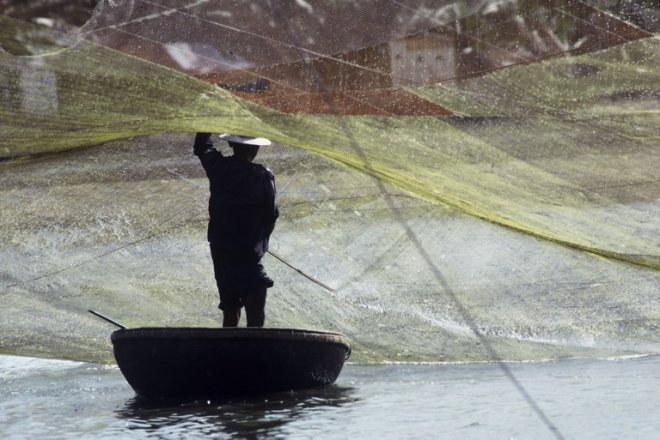Improved air quality in Southeast Asia in 2022, report says
The quality of air in most Southeast Asian countries was better in 2022 compared to previous years, though its cities performed relatively worse, a new report said.Cambodia was among the best performers as PM2.5 concentrations declined in seven of nine Southeast Asian countries last year, according to the World Air Quality Report by IQAir, a Swiss company that monitors the world’s major cities’ air quality in real-time.
“Countries in the Southeast Asia region have continued their efforts to decrease PM2.5 concentrations to safe levels recommended by the WHO guidelines,” IQAir’s fifth report released Tuesday night said.
“Industry, power generation, vehicle emissions, and open burning remain top contributors of PM2.5 in the area.”
PM2.5 are hazardous airborne particles smaller than 2.5 micrometers in diameter, which is about 30 times smaller than the diameter of a human hair.
According to the World Health Organization’s air quality guideline, an average annual exposure of PM2.5 should be no more than 5 micrograms per cubic meter (μg/m3) to avoid serious health risks.
Indonesia’s air, ranked 26 globally, was the worst in Southeast Asia in 2022, with an annual average of 30.4 μg/m3. It was also the worst ASEAN performer in 2021, though it had improved this last year by 11%.
“Air pollution in Indonesia is driven by coal-fired power plants, forest fires, and peatland degradation, while major cities are especially impacted by vehicle emissions,” IQAir said.
Only Laos (27.6 μg/m3) and Vietnam (27.2 μg/m3) had higher annual averages than in 2021. The duo was ranked 29 and 30 on the global list of 131 countries and territories.
All three countries were coded Red, which meant the annual average PM2.5 in their air exceeded WHO guidelines by 5 to 7 times.
Myanmar was ranked at 35 with a national average of 24.4 µg/m3, while neighboring Thailand (18.1 µg/m3) was ranked 57 and Malaysia (17.7 µg/m3) was ranked 59.
During the forest fires of March and April 2022, PM2.5 concentrations spiked 400% higher than WHO recommended levels in northern Thailand where people “are especially vulnerable to negative health impacts from air pollution,” the report said.
The Philippines, ranking 69, had a 14.9 µg/m3 annual average last year.
 A man covers his nose as he drives through an air polluted street in Hanoi, Oct. 1, 2019. Credit: ReutersMeanwhile, Cambodia experienced a 58% reduction in its annual average PM2.5 concentration in 2022, with a record low of 8.3 µg/m3, making it the least polluted country in the region.
A man covers his nose as he drives through an air polluted street in Hanoi, Oct. 1, 2019. Credit: ReutersMeanwhile, Cambodia experienced a 58% reduction in its annual average PM2.5 concentration in 2022, with a record low of 8.3 µg/m3, making it the least polluted country in the region. Its capital Phnom Penh also had the cleanest air among Southeast Asian cities with 8.3 μg/m3, ranking at at 97.
Among other capital cities, Hanoi performed the worst in the region, with 40.1 μg/m3, and ranked 18 globally. Jakarta followed it at 20 with a 36.2 μg/m3 annual average.
Vientiane was ranked 30, Yangon 35, Bangkok 52, and Metro Manila 62.
Out of the 296 regional Southeast Asian cities in the report, all but eight exceeded the WHO’s limit. Indonesia and Thailand featured the most frequently in the list of the most polluted regional cities, while Vietnam, as well as Indonesia, had least polluted ones.
Only 10% breathing air that poses no health risk
IQAir said it collected 2022 data from over 30,000 air quality monitoring stations across 7,323 locations in 131 countries, territories, and regions.
A scientist with Greenpeace International said such complex data “can inspire communities to demand change and hold polluters to account.”
“Too many people around the world don’t know that they are breathing polluted air… Everyone deserves to have their health protected from air pollution,” Aidan Farrow, an air quality scientist, said.
Air pollution reached alarming levels in 2022, with around 90% of the analyzed countries and territories exceeding WHO’s air quality guidelines, IQAir said.
Experts and scientists consider air pollution the world’s biggest environmental health threat, with poor air quality accounting for over six million deaths yearly.
The total economic cost equates to over U.S.$8 trillion, surpassing 6.1% of the global annual GDP, according to the World Bank’s global health cost report released last year.
The IQAir report said only 13 countries and territories had “healthy” air quality. None of them are from Asia, Africa, or South America.
 Cars and pedestrians navigate along a street shrouded in dust and haze in Beijing, Mar. 10, 2023. Credit: APChad topped the list of most polluted countries last year with a national average of 89.7 µg/m3, more than 17 times higher than the WHO guideline. It was followed by Iraq with more than 16 times higher than the WHO PM2.5 annual guideline.
Cars and pedestrians navigate along a street shrouded in dust and haze in Beijing, Mar. 10, 2023. Credit: APChad topped the list of most polluted countries last year with a national average of 89.7 µg/m3, more than 17 times higher than the WHO guideline. It was followed by Iraq with more than 16 times higher than the WHO PM2.5 annual guideline. Pakistan, Bahrain, Bangladesh, Burkina Faso, Kuwait, and India rounded up the top eight that exceeded the WHO guidelines by more than ten times.
The report said Oceania continues to have the cleanest overall air quality in the world, with the highest number of cities below WHO air quality guidelines.
Despite being one of the worst air pollution offenders for decades, China demonstrated improved air quality in 2022, with almost 64% of the 524 cities analyzed in mainland China reporting reduced annual PM2.5 levels. Two cities in its Xinjiang region, Hotan and Kashgar, were ranked the 2nd and 30th most polluted in the world, based on data IQAir gathered between 2017 and 2022.
“China’s coal usage continues to be a point of concern. China is responsible for a large portion of the world’s coal production and usage,” the report said.
“Coal combustion is a significant contributor to the country’s PM2.5 emissions profile along with other sources such as industry, biomass burning, road dust, and road vehicles.”
[圖擷取自網路,如有疑問請私訊]
|
本篇 |
不想錯過? 請追蹤FB專頁! |
| 喜歡這篇嗎?快分享吧! |
相關文章
AsianNewsCast























